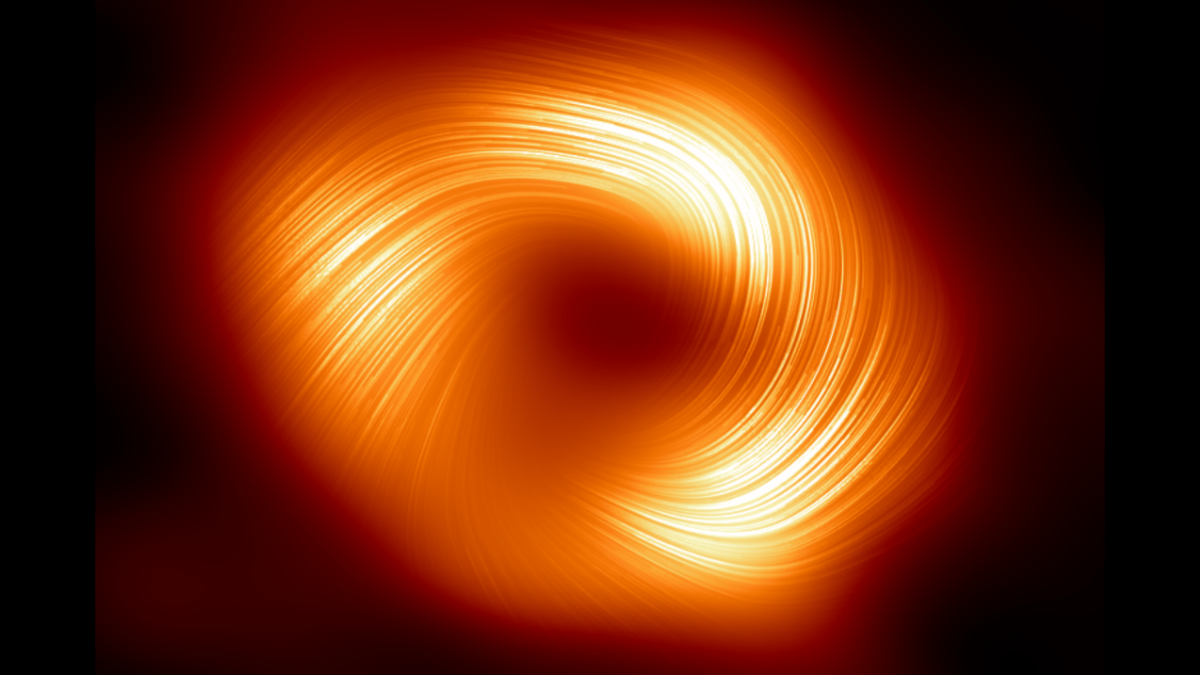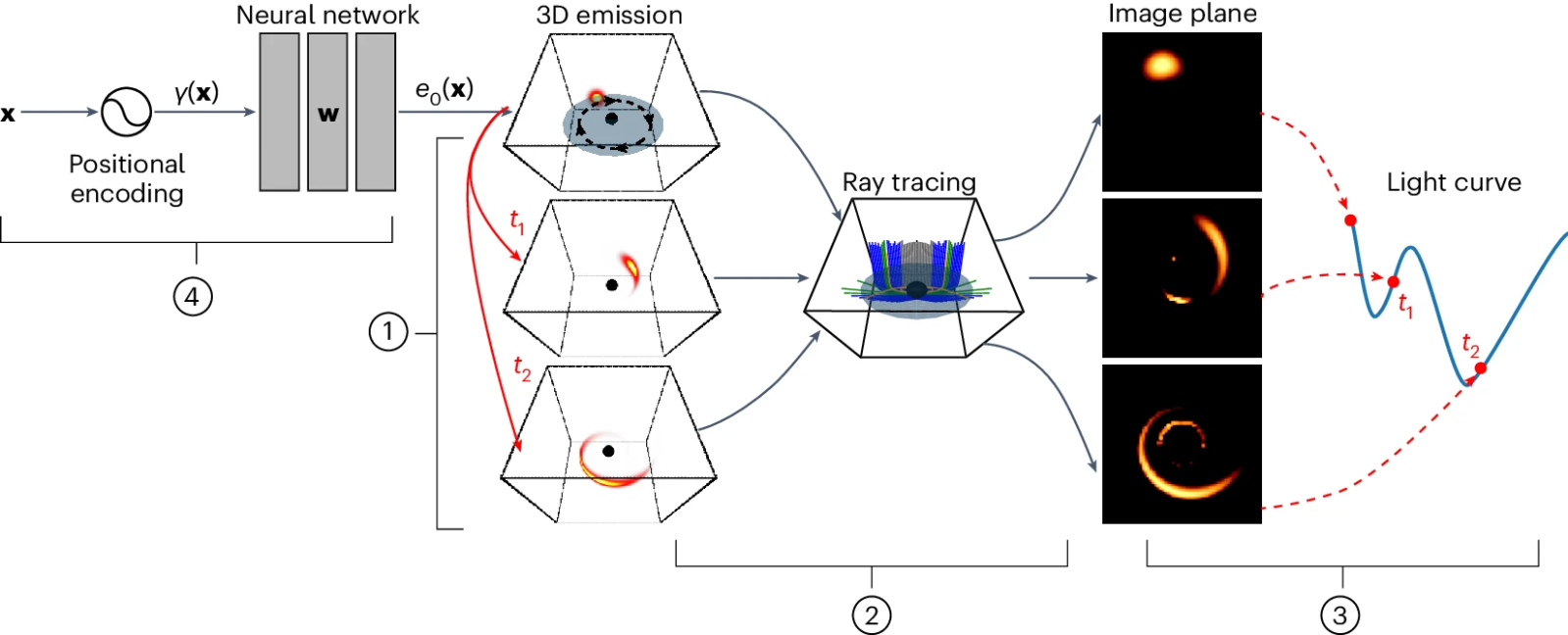Artificial intelligence reveals an eruption from the black hole at the center of our galaxy
Follow us on Google News (click on ☆)

The supermassive black hole at the heart of the Milky Way, Sgr A*, seen in polarized light.
Credit: EHT Collaboration
The material orbiting around Sgr A* forms a flattened structure, known as an "accretion disk," prone to these eruptions that occur across a wide range of light wavelengths, from high-energy X-rays to low-energy infrared and radio light waves.
The results from the calculations indicate that an eruption observed by the Atacama Large Millimeter/Submillimeter Array (ALMA) on April 11, 2017, originated from two bright spots of dense matter in the accretion disk of Sgr A*, both oriented towards Earth. These luminous spots orbit the supermassive black hole, which has a mass about 4.2 million times that of the Sun, while being separated by about half the distance between the Earth and the Sun, approximately 46.6 million miles (about 75 million kilometers).
To reconstruct these eruptions in 3D from observational data, the team, led by scientist Aviad Levis from the California Institute of Technology, introduced a new imaging technique called "orbital polarimetric tomography." This method is akin to the computer-assisted tomography scans, or CT scans, used in hospitals worldwide.

(1) A model follows the evolution of an initial emission volume over time.
(2) Ray tracing: calculation of light trajectory using the laws of gravity around the black hole to create images.
(3) Images are combined to obtain a single light measurement, which is then compared to actual observations.
(4) Computer visualization of the observed volume.
Aviad Levis explained that the compact region around the galactic center is an extreme location where hot, magnetized gas orbits a supermassive black hole at relativistic speeds. This unique environment fuels highly energetic eruptions, which leave observational signatures at X-ray, infrared, and radio wavelengths.
By relying on physics derived from Albert Einstein's 1915 theory of gravity, general relativity, and then applying these concepts around supermassive black holes to a neural network, they were able to create an AI model of Sgr A*.
This approach, which leverages the synergy between physics and AI, opens the door to new questions whose answers will continue to advance our understanding of black holes and the Universe.